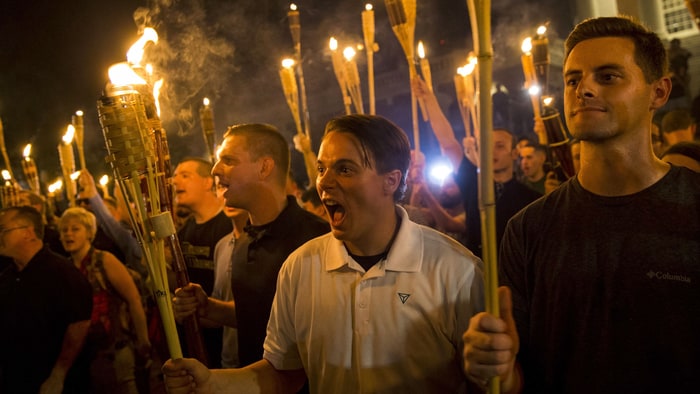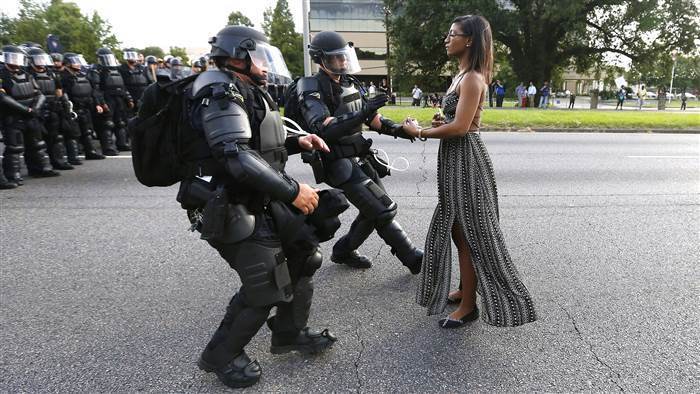
We have a group of white supremacists and literal Nazis who are starting fights and throwing torches, and this is somehow still only being called a protest/rally/march.

Last night a bunch of white supremacists and Neo-Nazis marched on University of Virginia’s campus holding torches and chanting things like “blood and soil,” “white lives matter,” “you can’t replace us,” and “anti-white.” Participants were also doing Nazi salutes and some fights broke out among the participants and counter-protesters.
I find it interesting (and frustrating) that most news coverage on this event is calling it either a protest, rally or march rather than what it should have been called: a riot. Google “Charlottesville” and see what comes up. I would bet money that you would have to scroll until you find an article or headline that refers to last night’s event as a riot. The same thing is happening on Twitter. I have seen many, many tweets about what has happened, but I have not seen it being called a riot.
The reason this is interesting and frustrating to me is because I know, based on the past three years or so, that if it had been a group of black people protesting for their right to live, it would have immediately been deemed a riot. However, here we have a group of white supremacists and literal Nazis who are starting fights and throwing torches, and this is somehow still only being called a protest/rally/march. While the dictionary definition of “riot” doesn’t necessarily mean that there is physical violence, it obviously carries a much more dangerous and less respectable connotation to us than “protest” or “rally” or “march,” which all carry the connotation (at least to me) of people just exercising their political right.
At first thought, it may not seem like such a big deal that different protests are called different things. But I have said it before and I’ll say it again, words are powerful. If they weren’t, political candidates wouldn’t give speeches, commercials wouldn’t have catchy slogans, and you probably wouldn’t be reading this.
So, the difference in what these events are being called is important. This difference highlights the fact that whiteness is always protected, even at its worst. Even when there is violence and racism involved on a large scale, whiteness is still protected. This was showcased by this riot not only in the way that it’s being talked about, but also in the lack of police presence. Judging from photos and videos on Twitter, it seems that there were not many police, and the officers that I saw were not in riot gear. This can be compared to the many instances we’ve seen online of black people protesting and having to face off against swarms of police, many in riot gear and willing to get physical with anyone. An example can be seen in this now famous photo.

People have commented on this stark difference between how the “protesters” last night were treated by the police versus how people of other races would be treated in similar situations.
Since the birth of this nation, there has been nothing as strongly valued and protected as whiteness (capitalism is a close second). That is clear not only from the riot that took place, but also by the way it is being discussed in the mainstream media — using names that soften the impact of what happened — and the way that these rioters were much more free than other protesters of color to do what they wanted. Black protesters have to worry about being beaten by a cop with a baton, or maybe even worse, while these Neo-Nazis felt free to start fights and throw torches in part because of the lack of police presence. White supremacy doesn’t always look like a group of white people marching on a college campus holding torches and giving the Nazi salute; it often looks like doing whatever is necessary to still somehow hold whiteness on a pedestal no matter what is taking place.

Leave a Reply